Learn how to make sugar free banana popsicles! This sugar free banana popsicle recipe has only 4 ingredients and is vegan and gluten free. You’ll love how creamy and delicious these no sugar added banana pops are and the simple ingredients list. You can feel good about feeding the family this snack that has no artificial sweeteners or colors. Only 82 calories per pop!
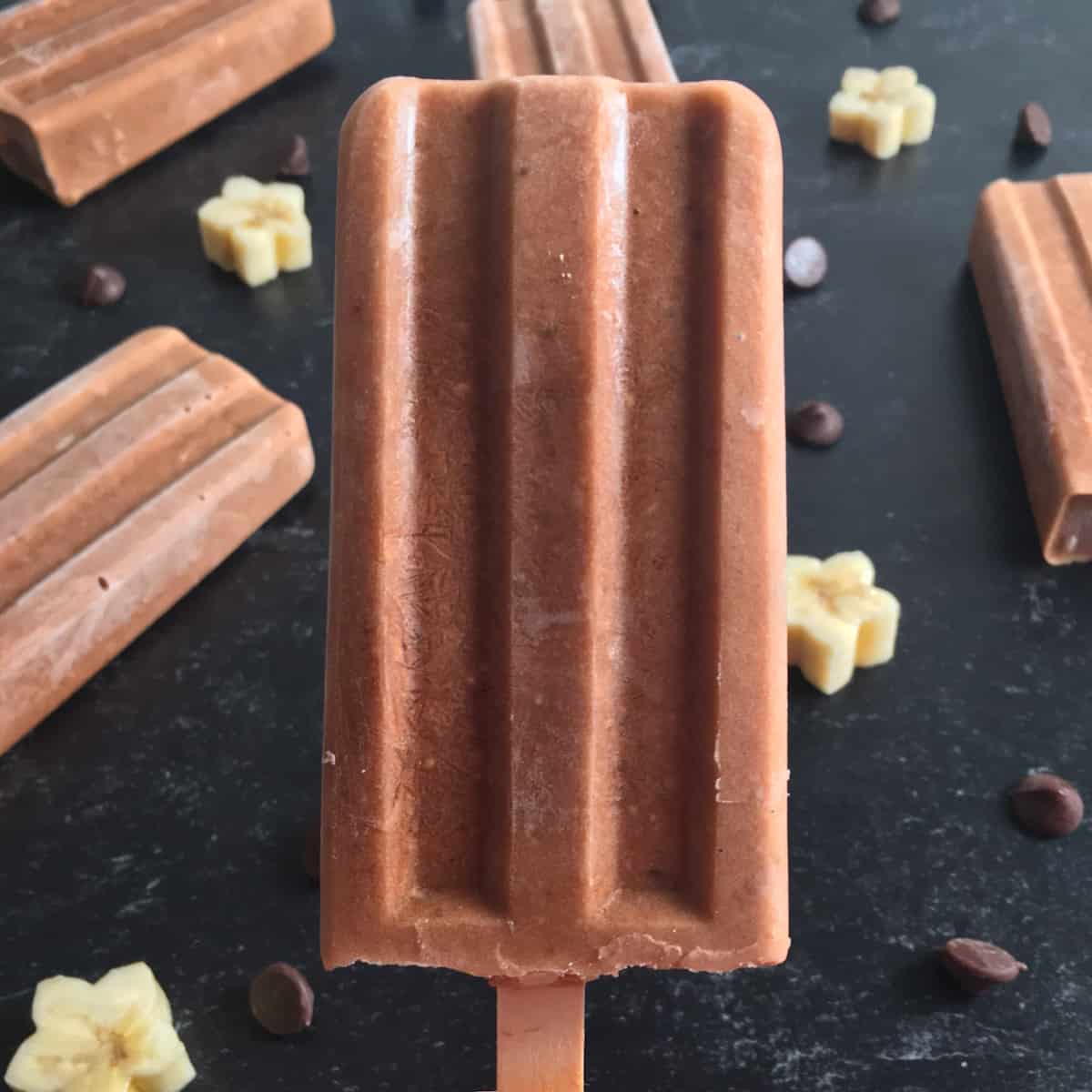
Want to save this post?
Enter your email below and we'll send it straight to your inbox. Plus you'll get great new recipes from us every week!
These homemade banana popsicles are a regular thing in my household. I almost always have what I need in the house to make these. I hope they’ll become your new favorite healthy treat as well.
Before we get into the recipe, though, I need to answer a very common question...
Is no sugar added the same as sugar free?
The answer is no! “No added sugar” means we haven’t added white sugar, brown sugar, honey, maple syrup, sweetened cocoa powder, and other sources of added sugars. “Sugar free” means there’s no added sugar AND no natural sugar from whole fruit and dairy.
That means you technically can’t make sugar free banana pops containing bananas, since bananas are rich in natural sugars. Bananas are not a low carb food.
Sugar free banana popsicles from the store typically contain artificial banana flavoring plus an artificial sweetener (such as sucralose or aspartame). If you’re looking for sugar free popsicles for diabetics, these may be a decent low carb snack choice for you.
For others, decreasing added sugars while adding more whole fruit to the diet is the way to go. Many Americans are consuming far beyond the recommended limit for added sugars. Try these added sugar free banana pops if you’d like to start cutting back!
Table of Contents
📋 Calories, Net Carbs, Protein
One sugar free banana pop has 82 calories, 9.6 grams net carbs, and 2.9 grams protein. The exact nutrition information will depend on the size of your pop molds and the type of milk you use. This info reflects a recipe yield of 6 banana popsicles.
⭐ Sugar Free Banana Popsicles Benefits
Why make sugar free banana popsicles? Here are some reasons to love this easy recipe:
- Low Calorie: Each sugar free banana popsicle is under 100 calories. This portion-controlled treat is an easy fit if you have a weight loss goal.
- Special diets: This sugar free banana ice pop recipe is naturally dairy free, gluten free, and vegan. It’s perfect for feeding plant based friends!
- Easy: With a food processor and some pop molds, this recipe takes less than 5 minutes to make. If you like low effort recipes, this one’s for you.
- Whole Fruits: This recipe is a great way to use overripe bananas, and they provide the natural sweetness in this recipe. Whole fruits, such as bananas, contain more fiber than fruit juices.
- No Sugar Added: Sweetened banana pops from the store typically use corn syrup. My healthier banana popsicles get their sweetness and calories from whole food ingredients like bananas and peanut butter.
- No Artificial Stuff: These sugar free banana ice pops have no artificial sugar and no artificial color. The simple ingredients here are probably already in your freezer and pantry.
- Delicious: If you’re looking for a cold and creamy sweet treat, this recipe should satisfy your sweet tooth. Kids tend to love it too!
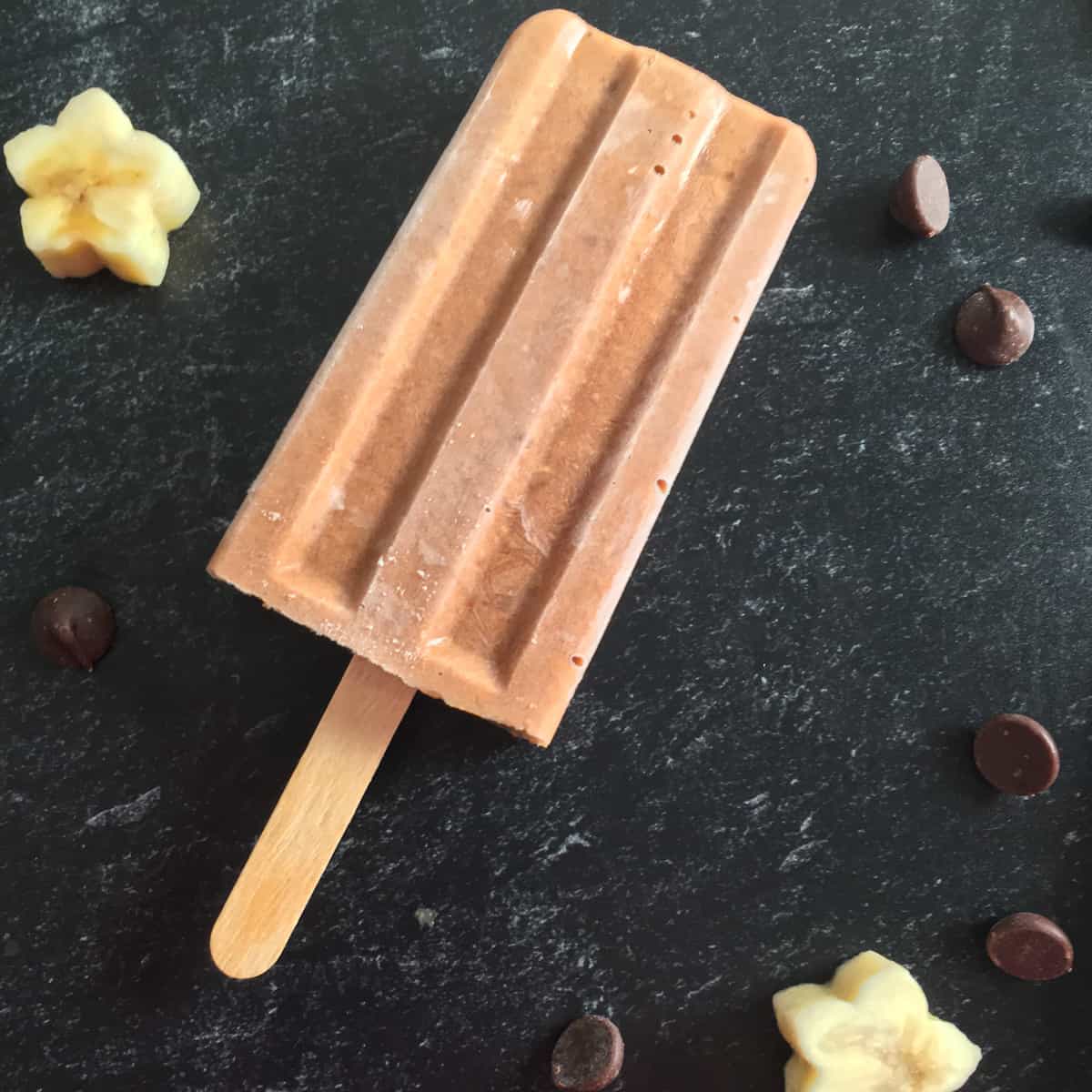
🥘 Sugar Free Banana Popsicles Ingredients
What do you need to make banana popsicles with no sugar added? Here's your simple shopping list:
- 2 frozen bananas (use very ripe bananas!)
- 2 tablespoons creamy peanut butter
- 1 cup unsweetened soymilk
- 1 tablespoon dark cocoa powder
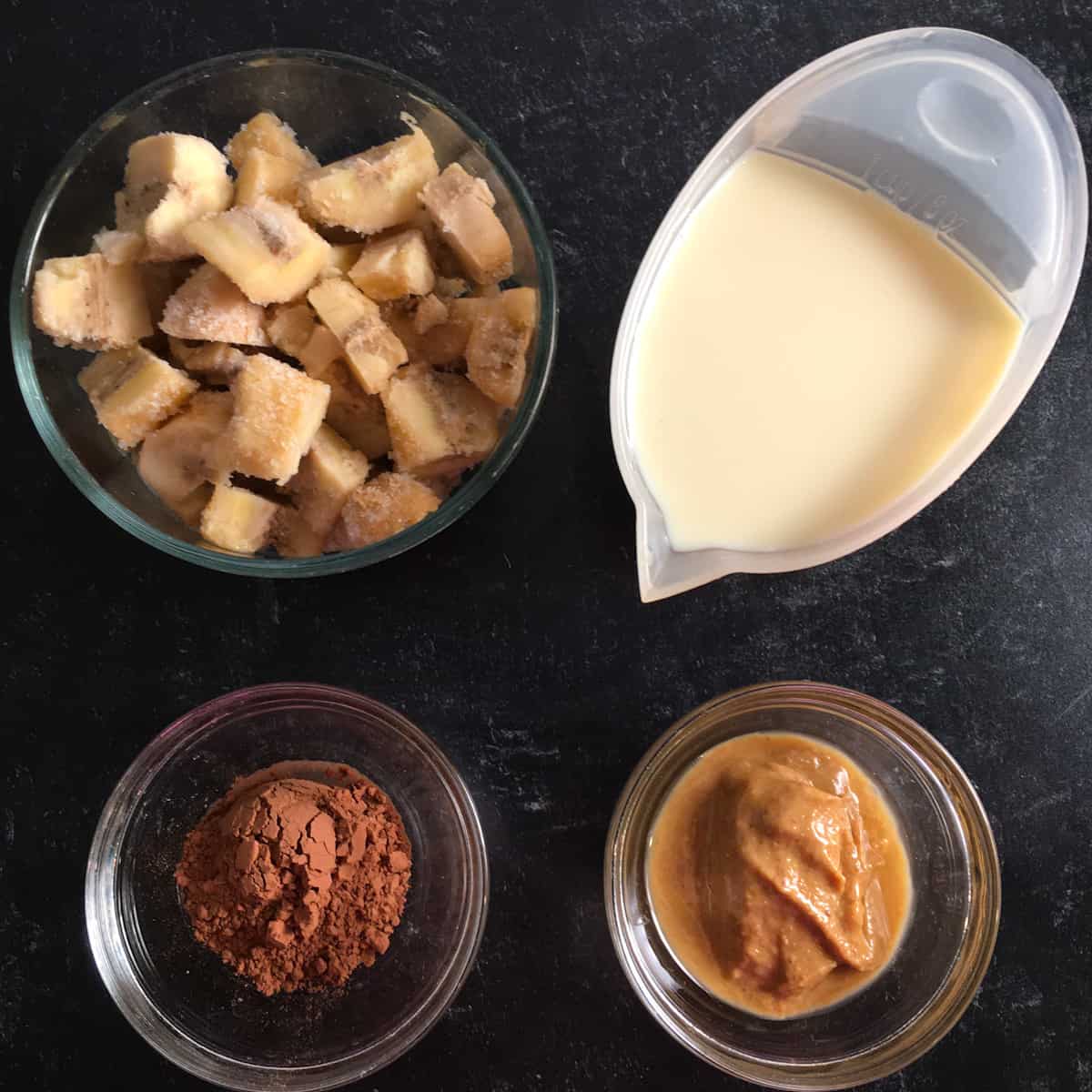
When I buy bananas, it seems like a few always turn black before I use them. Slightly green bananas are my favorite for eating fresh. I’m more likely to let them overripen once they become completely yellow.
Instead of throwing the black bananas out or making copious amounts of banana bread, I freeze them. I peel them, break them into chunks, and store them in small freezer baggies in the freezer. That way, they are ready to pop into recipes whenever I want them.
Put those ripe freezer bananas to use in this recipe. You don’t even need to thaw them first!
🍽 Equipment
Here’s the kitchen equipment you need to make sugar free banana popsicles:
- A good knife
- Food processor
- Popsicle molds (with popsicle sticks)
Silicone popsicle molds are my favorite moulds, because the pops release so easily. Here are the pop molds I use. If you’ve been struggling with those hard plastic popsicle molds, maybe it’s time to try something new!
🔪 How to Make Sugar Free Banana Pops
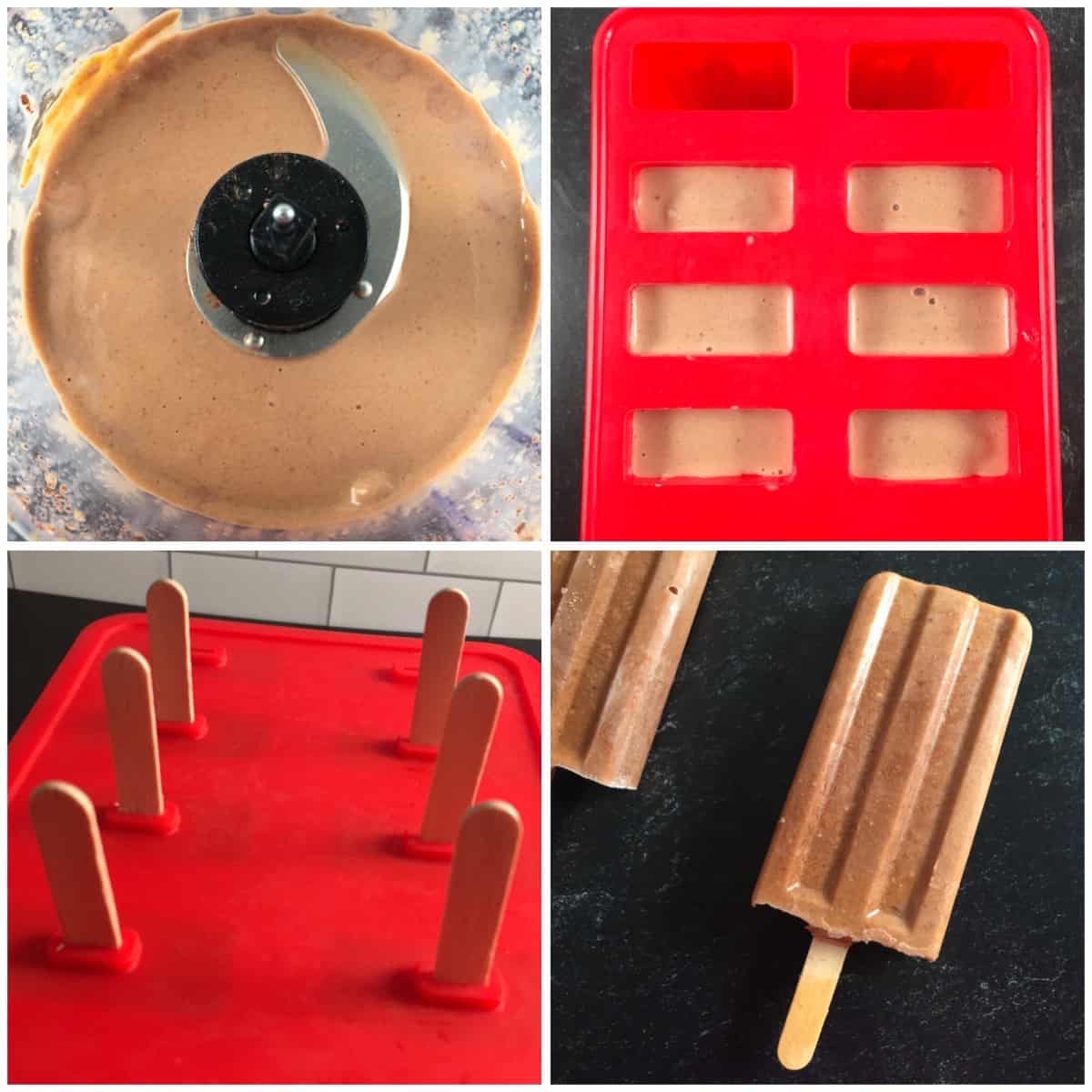
Time to make sugar free banana pops! Begin by chopping the frozen bananas into smaller pieces for easier blending.
Put the bananas, peanut butter, milk, and cocoa powder in a large food processor. Blend the ingredients until completely smooth. (You may need to stop the food processor and scrape down the sides with a spatula if ingredients are sticking.)
After you’ve got a smooth and creamy mixture, carefully pour it into your pop mold. Insert the popsicle sticks and freeze the mold for at least 6-8 hours (or overnight). Enjoy your sweet homemade treat!
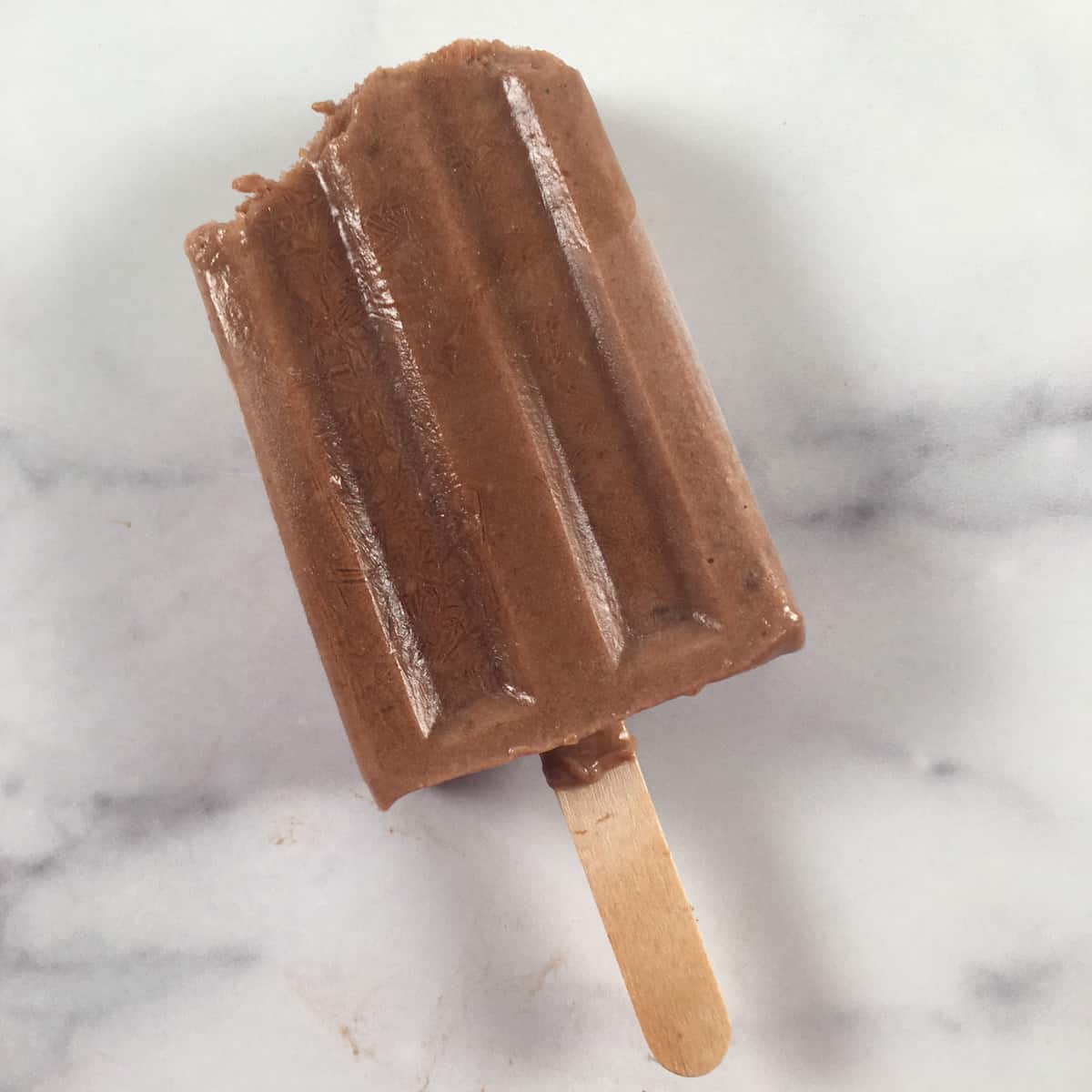
🍌 Sugar Free Banana Popsicle Variations
There are lots of ways you can change up this unsweetened banana popsicles recipe! For example, you could use almond butter, sunbutter, or your favorite nut butter or seed butter instead of peanut butter. You could also try cacao powder in place of the cocoa powder to make chocolate popsicles.
For soy-free banana popsicles, try full fat coconut milk or dairy milk instead of soymilk. Cow’s milk whips up more than soymilk. The result is a higher yield of popsicles that are even creamier. (Yum!)
For a different spin on banana popsicles with no sugar added, try halving fresh bananas widthwise and putting them on sticks. Spread a thin layer of peanut butter on the bananas and freeze. Then drizzle melted chocolate on the bananas (you can use melted sugar free chocolate chips) and freeze again.
The banana pops just mentioned don’t require a food processor or pop moulds to make them. They’re a great option if you don’t have a well-equipped kitchen and want chocolate banana popsicles!

FAQs
How much sugar is in a banana popsicle?
My recipe for banana pops contains approximately 5.5 grams of natural sugar per pop. The Budget Saver Banana Pops at Walmart contain 11 grams of sugar each (all added sugars). Kroger Sugar-Free Banana Pops contain 0 grams of sugar each.
What are the best sugar free popsicles?
The “best” sugar free popsicles depends on what you are looking for. To simply cut back on added sugars, choosing ice pops made with whole fruits and soymilk or dairy provides the most nutrition. For the lowest carb count and lowest calories, store bought sugar free ice pops may be better.
Who makes sugar free banana popsicles?
It can be tough to find sugar free banana popsicles; you’ll need to hunt around at local stores. Kroger sugar free banana popsicles is one option. Blue Bell and Mayfield both make banana popsicles, but they are not sugar free.
Where to buy banana popsicles?
You can buy banana popsicles at most major supermarket chains in the U.S. Walmart, Kroger, and Publix are a few options.
How do you make homemade popsicles softer?
High water content can make homemade popsicles hard. That’s why juice pops tend to be harder than popsicles made with whole blended fruits. You can also add more fats (such as heavy cream or nut butter) to make softer ice pops.
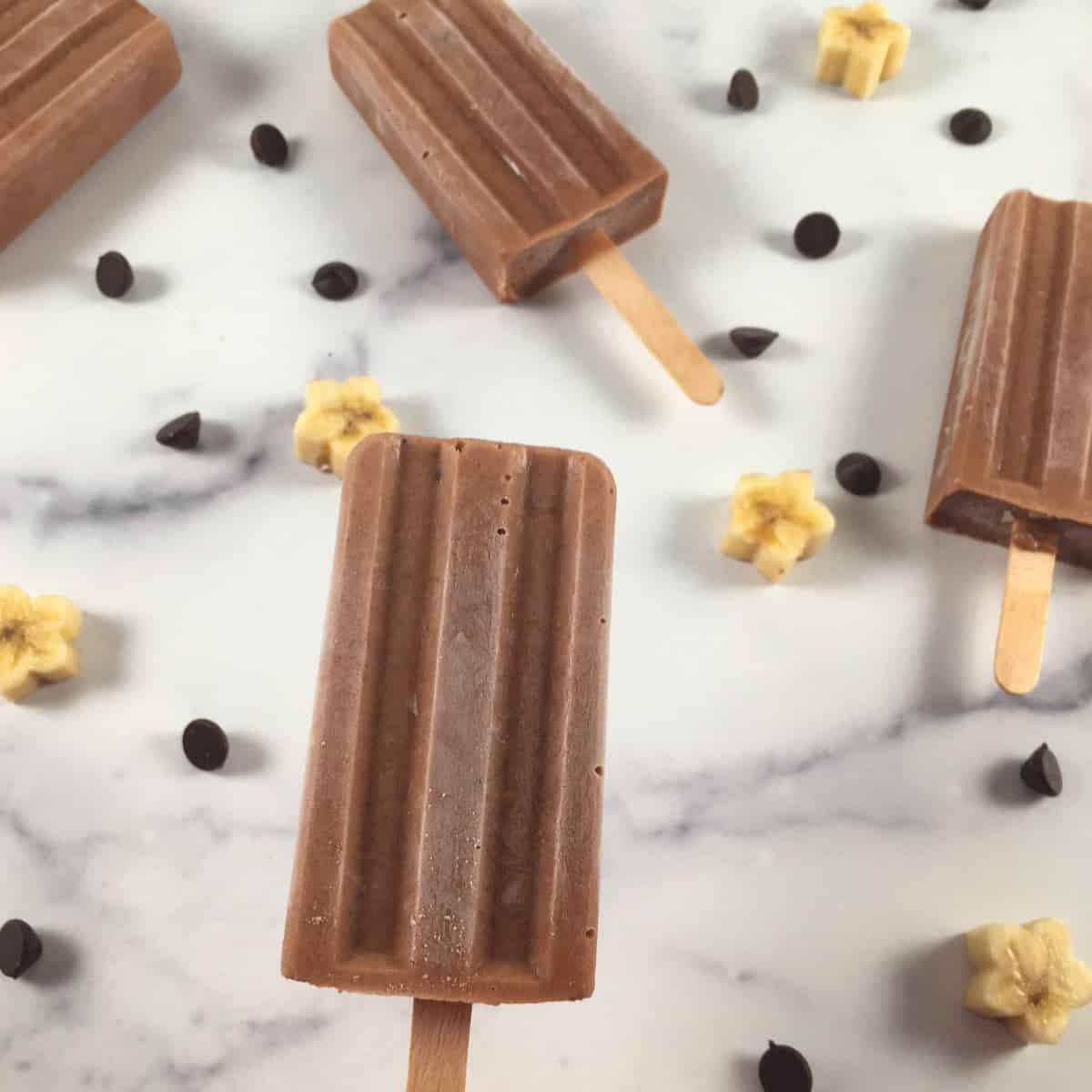
👩🍳 More Sugar Free Popsicle Recipes
Want more recipes for sugar free popsicles? Here are some more pop recipes with no sugar added:
📖 Recipe Card
Watch How to Make It!
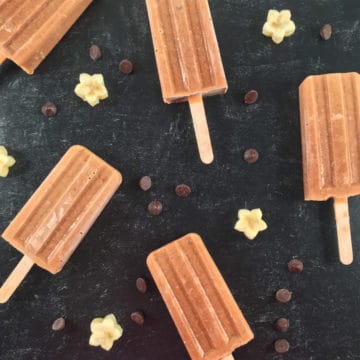
Sugar Free Banana Popsicles (Vegan Ice Pops Recipe)
Ingredients
- 2 medium ripe bananas (frozen)
- 1 cup milk (unsweetened soymilk or dairy milk)
- 2 tablespoons peanut butter (choose one with no sugar added)
- 1 tablespoon dark cocoa powder
Instructions
- Chop the frozen bananas into small pieces for easier blending.
- Put the bananas, peanut butter, milk, and cocoa powder in a large food processor. Blend the ingredients until completely smooth. (You may need to stop the food processor and scrape down the sides with a spatula if ingredients are sticking.)
- Pour the blended mixture into a popsicle mold. Insert the popsicle sticks and freeze the mold for at least 6-8 hours (or overnight). Enjoy!
Equipment
Notes
💭 Expert Tips from Dietitian Summer Yule
This is a level 1 recipe (may help support fat loss). The calorie count on this recipe depends on the size of the pop molds you use. I love these silicone pop molds from Amazon. Even though this is a low-calorie treat, I’d still be mindful of the portion size. Some may find the low-protein fat/carb combo here very easy to overeat. I would not expect this snack to be nearly as filling as a higher protein snack with similar calories (e.g., plain Greek yogurt). That said, these are some of the healthiest sugar free popsicles around in terms of nutrition. The sugar free popsicles from the store with artificial flavors and sweeteners typically have few essential vitamins and minerals. Aiming for added sugar free instead of sugar free means we can use nutrient-rich fruits in our pops. You’re getting potassium, fiber, and vitamin C from the bananas. Peanut butter adds some heart-healthy fats, and the soymilk gives us protein and calcium. It’s true that these pops are higher in calories than most sugar free popsicles from the store. However, they’re also a far more nutritious option. Lower calorie doesn’t always mean healthiest or most nutritious! Nutrition information is for one-sixth of the recipe. Exact nutrition information per popsicle will depend on the size of your pop molds and bananas, as well as the type of milk you use.
nutrition info disclaimer
All recipes on this website may or may not be appropriate for you, depending on your medical needs and personal preferences. Consult with a registered dietitian or your physician if you need help determining the dietary pattern that may be best for you.
The nutrition information is an estimate provided as a courtesy. It will differ depending on the specific brands and ingredients that you use. Calorie information on food labels may be inaccurate, so please don't sweat the numbers too much.
"To taste" means to your preferences, which may have to be visual to follow food safety rules. Please don't eat undercooked food x
Nutrition
Join our community! Subscribe for all of the latest and greatest recipes, and follow me on Facebook, Pinterest, Instagram, and YouTube!

Hello! I'm Summer, a registered dietitian and home chef who loves to cook, eat, and create high quality content for you! Every recipe on this site has been tested by me to help ensure your success in the kitchen. All eaters are welcome here 🙂


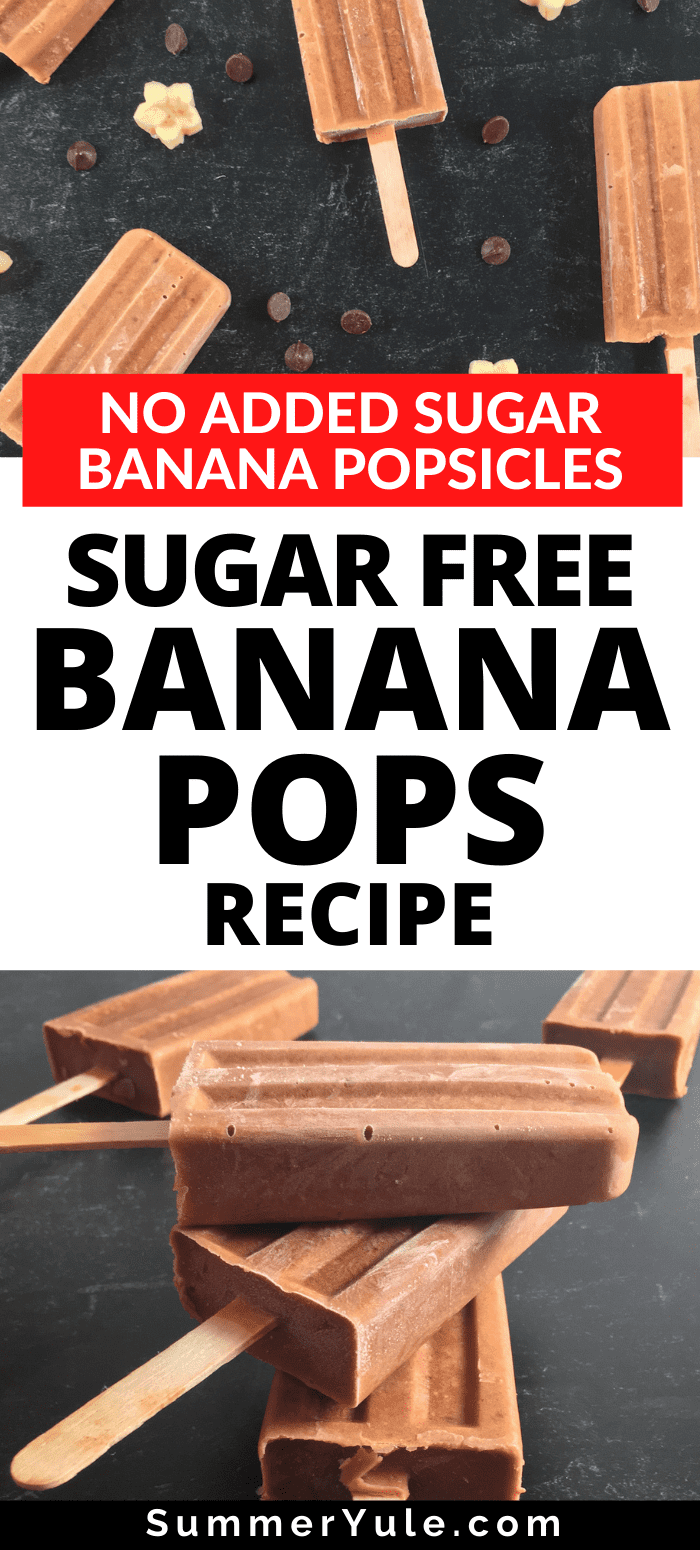
kagucuisine says
These are absolutely going on the to-do list! My kids are pestering me for weeks that they want to make ice cream. And no it’s not summer in France but ice cream craving doesn’t follow seasons
Summer Yule says
Every season is ice cream season, isn't it? I hope your kids like this recipe as much as my son does!
Terrified Amateur says
Good recipe, Summer, and a creative way to use up those two or three bananas that, inevitably, start to turn before we can use up the bunch.
Plus, bananas and peanut butter - so good it gets Elvis's approval, even from realms beyond....
Summer Yule says
Indeed! Perhaps I should have named them something Elvis-related...
"Can't help falling in love" with these banana peanut butter pops
The banana peanut butter pops that are "always on my mind"
Hmmm, maybe not. Haha